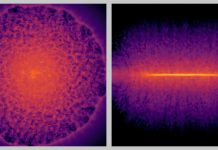
Imagine your phone or computer lasting much longer on a single charge, storing more data, and running more smoothly.
Thanks to a new breakthrough from researchers at the Institute of Science Tokyo, that future may be closer than we think.
Scientists have developed a new type of ultra-thin material that could dramatically reduce power use in electronic memory devices—and open the door to even faster communication systems like 6G.
The material is made from a combination of aluminum nitride (AlN), gallium nitride (GaN), and scandium (Sc), and is known as a ternary alloy film.
These components are already used in everyday technologies like LED lights. But when blended together in just the right way, they create a new crystal structure that has unique electrical properties, including the ability to remember data without needing constant power.
This type of material is known as “ferroelectric,” and it holds great promise for next-generation memory chips.
One of the biggest challenges in the field has been trying to add more scandium to these materials. Scandium can lower the amount of power needed to switch memory states, but too much of it has made the material unstable in past experiments.
The team in Tokyo, led by Professor Hiroshi Funakubo, found a way to solve this problem. By mixing GaN with AlN in specific ratios, they were able to add much higher levels of scandium than ever before while keeping the material stable.
To create these new films, the team used a method called reactive magnetron sputtering. This technique allows for precise control over the mixture of elements as the film is formed layer by layer on top of silicon wafers.
After carefully adjusting the composition, they tested the films using high-tech tools like X-ray diffraction and electron microscopy. These tests helped them understand how the atoms were arranged and how the films behaved electrically.
One of their key findings was that the new material required much less electric force—called a coercive field—to switch its polarization.
This means that devices made from it could use far less energy. In fact, they saw a major drop in required voltage, from 5.8 million volts per centimeter to just 1.8 million. That kind of reduction could make a big difference in how long batteries last and how efficient future devices become.
In addition to memory applications, the films also showed strong piezoelectric and optoelectric properties, making them useful for things like high-frequency noise filters and low-power optical computing—both of which are important for upcoming 6G networks and advanced computing technologies.
This research not only improves the way memory chips could be made but also sets the stage for smarter, more energy-efficient electronics in the near future.



